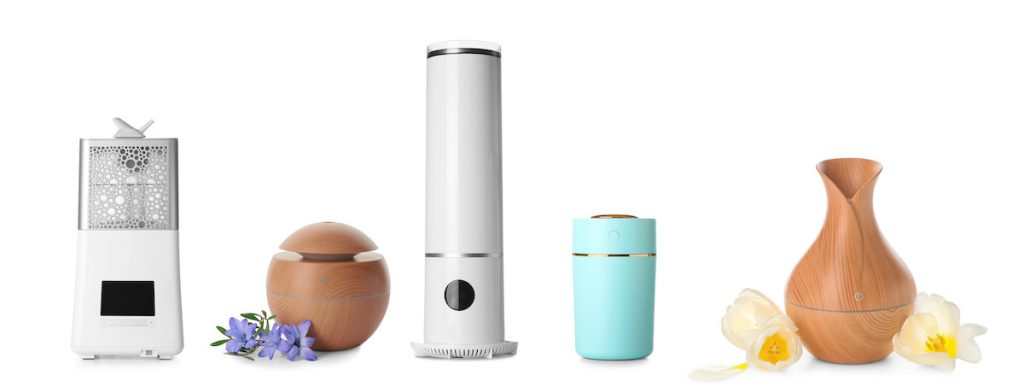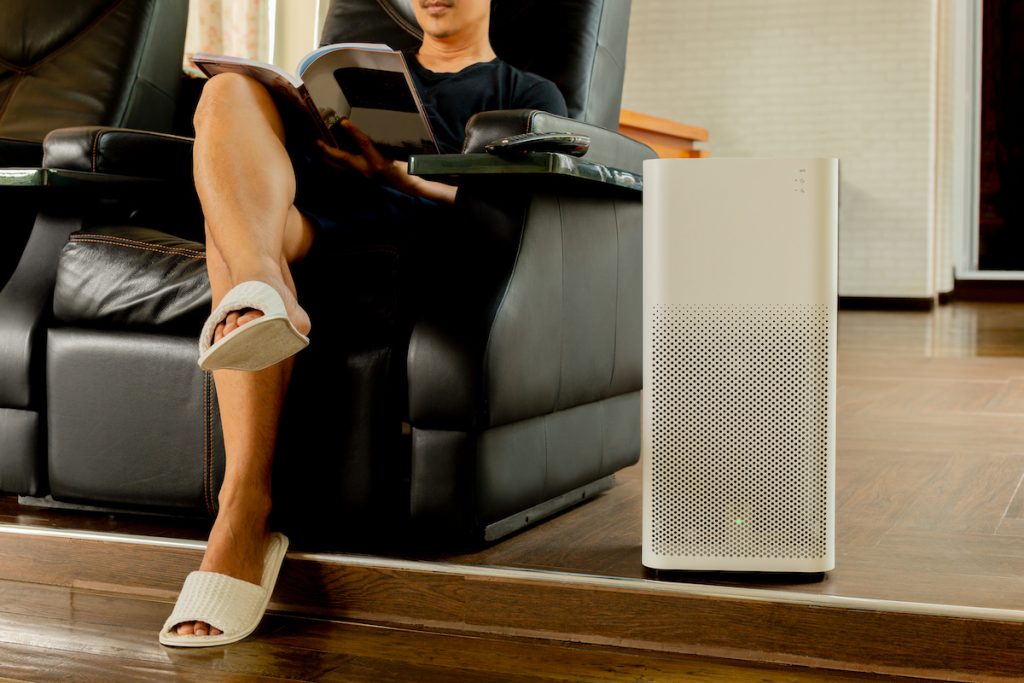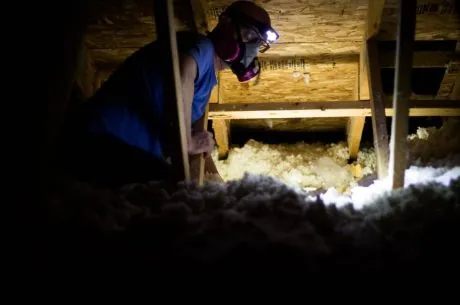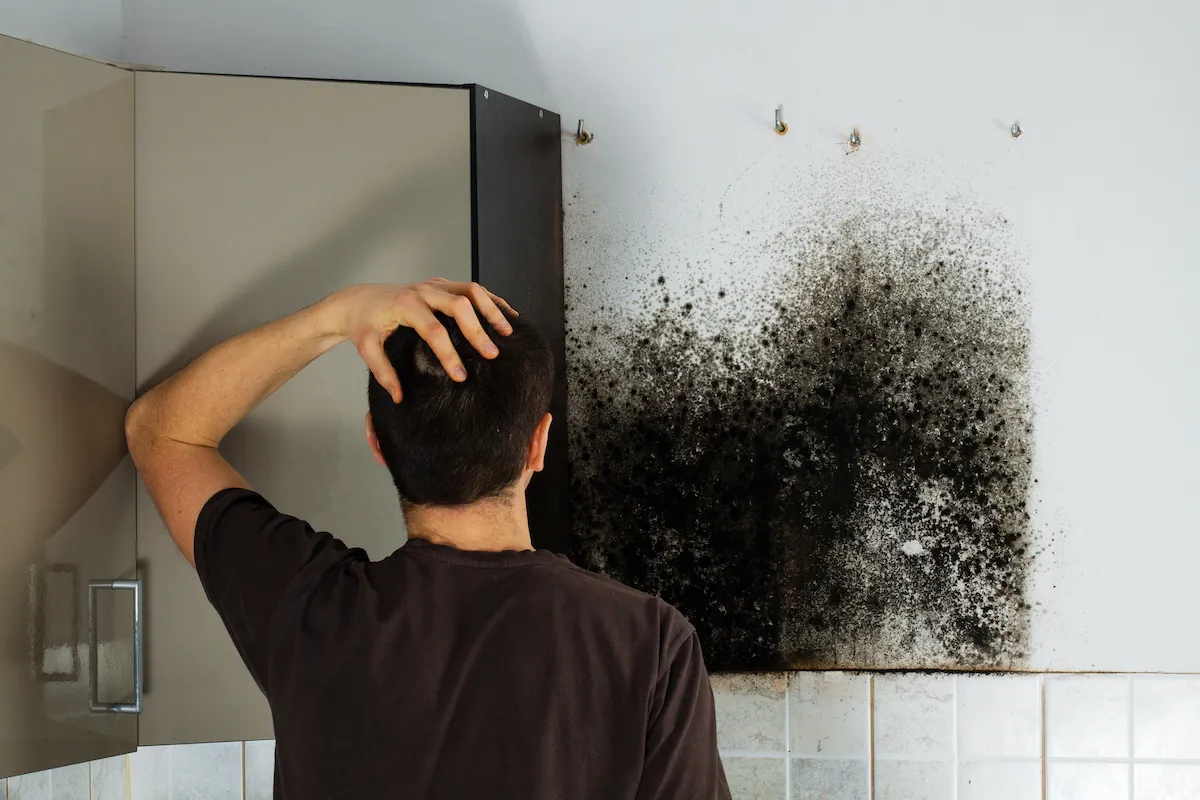A dehumidifier can be a great way to improve the air quality in your home. By removing excess moisture from the air, a dehumidifier can help to reduce the amount of mold, mildew, and dust mites in your environment, as well as make it more comfortable to breathe.
They come in various sizes and are popular for both personal and commercial use. If you’re thinking of purchasing a dehumidifier or already have one, here is some more information about humidifiers and tips for how to use them effectively for healthy air.

Why are Dehumidifiers Important?
Dehumidifiers are essential for improving air quality and preventing mold from forming. Mold can lead to respiratory issues and other health ailments; therefore, removing mold spores from the environment as soon as possible is critical.
Removing all mold spores from your home is nearly impossible. Mold stays “dormant” in the air or on surfaces even when there’s no excess moisture to help it grow. If the humidity in a room increases, mold can start growing in patches on walls, clothes, and more. Dehumidifiers do NOT kill mold, but they do prevent it by reducing humidity.
Dehumidifiers also help reduce humidity levels, which can be beneficial in areas with high humidity. Excess humidity makes it difficult to breathe and can also cause condensation on walls and windows. Being able to control humidity in your home increases comfort and, once again, prevents mold growth.
How do Dehumidifiers Work?
Dehumidifiers work by drawing in moist air and then cooling it down. The water droplets that are formed from the cooled air are then collected in a tank or drainage system. Most dehumidifiers have a humidity level gauge so that you can see what the current humidity level is in your environment. Learn more about the effect dehumidifiers have on mold here.
Which Dehumidifier is Right for Me?
Most modern dehumidifiers do their job well, so choosing the right one is about what works best for you. There are a few things you’ll need to consider when purchasing a dehumidifier. The size of the unit, the noise level, how often the water needs to be emptied, and the price are all important factors.
For small spaces, such as bathrooms and closets, a personal dehumidifier is a good option. These units are portable and typically very quiet. They also don’t require much emptying, making them easy to use.
If you have a larger space that needs to dehumidified or live in a high-humidity area, you will need a bigger unit. Industrial or commercial dehumidifiers can handle large areas and are designed to reduce humidity levels quickly. They may be a bit louder than personal or small dehumidifiers, but they are still much quieter than a typical air conditioning unit.

Desiccant Dehumidifiers
Desiccant dehumidifiers use a desiccant material to absorb moisture from the air. Consequently, these units do not rely on cooling the air to collect the water droplets and are able to work in very high temperatures and low temperatures (anything above freezing). They are also more energy-efficient than traditional dehumidifiers and can be beneficial in areas with limited power access. They do tend to be more expensive.
Compressor Dehumidifiers
This type of dehumidifier works in a similar way to an air conditioner. It has a compressor, condenser, and expansion valve. The compressor pulls in the moist air and compresses it. This increases the temperature of the air and causes the water droplets to evaporate. The droplets are then collected by the condenser and cooled down before being released into the atmosphere. The coils can freeze in cold temperatures, so these work best in warm weather. They are a bit noisy but tend to be less expensive.
Tips to Effectively Use a Dehumidifier
Once you’ve chosen the right dehumidifier for your needs, it’s important to learn how to use it properly. There are a few things that you can do to get the most out of your dehumidifier. Here are some important tips to keep in mind:
Choose the Best Size and Placement for Your Space
Make sure that the unit is properly sized for the area that you’re trying to dehumidify. A unit that’s too small will not be effective, and a unit that’s too large will be wasteful. Place the dehumidifier in a well-ventilated area that’s out of direct sunlight so that it can work properly. The sun will increase the temperature of the unit and make it work harder to remove moisture from the air.

Empty the Water Tank and Clean the Filter
Make sure that the water tank is emptied regularly. If the tank gets too full, it will cause the dehumidifier to work harder and use more energy. Clean the filter regularly. If the filter is dirty, it will reduce the performance of the dehumidifier.
Find the Right Humidity Levels
There is no one perfect humidity level for all homes. You need to find the right humidity level for your home by trial and error. Some people prefer a slightly higher humidity level, while others find that it’s more comfortable at a lower humidity level. Generally, setting a relative humidity between 30% – 50% is recommended. You can adjust the humidity level on most dehumidifiers to find the setting that’s right for you.
By following these tips, you can ensure that your dehumidifier is running at its best and removing excess moisture from the air. Dehumidifiers are an important part of any home, and they can help to improve air quality and prevent mold growth.
How to Properly Clean and Care for a Dehumidifier
In order to continue enjoying this cleaner indoor air quality, it’s important to learn how to clean and properly care for your dehumidifier. If the unit isn’t cleaned regularly, it can become clogged with dirt and dust and will no longer effectively remove excess moisture from the air. Here are some tips for cleaning and caring for your dehumidifier:
1. Make sure that the dehumidifier is unplugged before cleaning.
2. Remove the water tank and dump out any excess water.
3. Wipe down the exterior of the unit with a damp cloth.
4. Clean the filter with a vacuum cleaner or brush.
5. Pour vinegar into the water tank and let it sit for 10 minutes. Scrub it with a brush and then rinse it thoroughly with water. Scrub the coils with a vinegar and water mixture.
6. Reattach the water tank and plug in the dehumidifier.
7. Run the dehumidifier on high for 30 minutes to clear out any built-up moisture. Dehumidifiers are a great way to improve air quality and prevent mold growth in your home.
By following these tips, you can ensure that your dehumidifier is running at its best while removing moisture from the air.

PuroClean is Available 24/7 to Take Care of Your Property Restoration Needs!
A pleasant and secure environment should be the goal of every homeowner. A dehumidifier can aid in the control of your home’s relative humidity level, keeping mold at bay while also safeguarding those who reside there. If you are in need of home restoration services, PuroClean is available 24/7 to take care of all your needs. We have extensive experience with water damage, fire damage, and mold remediation. Visit our website or call (800) 775-7876 today to get connected with your local PuroClean office.




